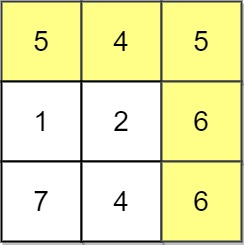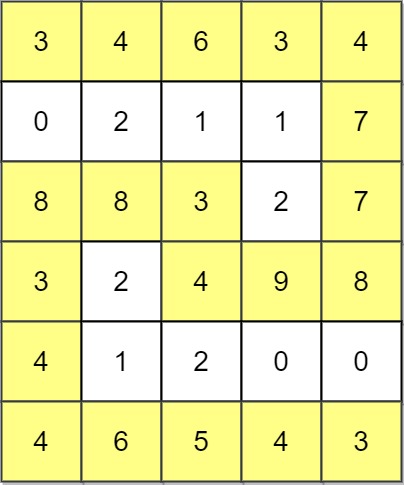1102. Path With Maximum Minimum Value
1102. Path With Maximum Minimum Value
Description
Given an m x n integer matrix grid, return the maximum score of a path starting at (0, 0) and ending at (m - 1, n - 1) moving in the 4 cardinal directions.
The score of a path is the minimum value in that path.
- For example, the score of the path
8 → 4 → 5 → 9is4.
Example 1:

1 | Input: grid = [[5,4,5],[1,2,6],[7,4,6]] |
Example 2:

1 | Input: grid = [[2,2,1,2,2,2],[1,2,2,2,1,2]] |
Example 3:

1 | Input: grid = [[3,4,6,3,4],[0,2,1,1,7],[8,8,3,2,7],[3,2,4,9,8],[4,1,2,0,0],[4,6,5,4,3]] |
Constraints:
m == grid.lengthn == grid[i].length1 <= m, n <= 1000 <= grid[i][j] <= 10^9
Hints/Notes
- 2025/04/12 Q3
- dijkstra
- Leetcode solution
Solution
Language: C++
1 | class Solution { |